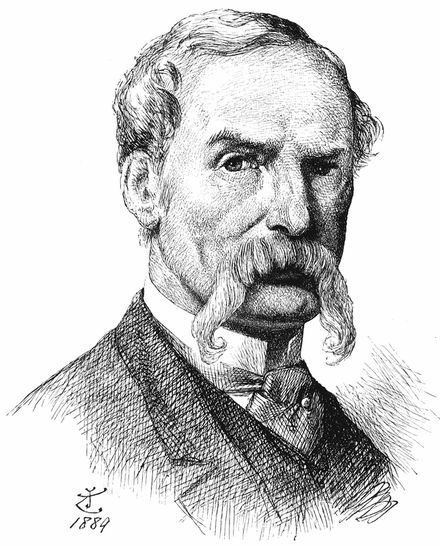If you're familiar with Lewis Carrol's "Alice in Wonderland" and "Through the Looking Glass" you've most certainly already stumbled upon the marvelous drawings of John Tenniel. But one thing I didn't know about him is that he was blind in one eye! So here are a couple more facts about him.
John Tenniel was the third son of John Baptist Tenniel (1793–1879), a dancing-master, was born in London on 28th February, 1820. His biographer, Lewis Perry Curtis, has pointed out: "Living in genteel poverty in Kensington, his parents could not afford much formal education for their six children. Tenniel, the third son, attended a local primary school and then became the pupil of his athletic father, who taught him fencing, dancing, riding, and other gentlemanly arts. At the age of twenty, while fencing with his father, the button of his opponent's foil fell off and he suffered a cut that blinded his right eye - an injury that he concealed from his father for the rest of his life in order to spare him any pangs of guilt."
Tenniel attended the Royal Academy but left in disgust at the quantity of teaching he received. When Tenniel was sixteen he began having his paintings exhibited at the Suffolk Street Galleries. He was soon recognised as a talented artist and he received several commissions, including the production of a fresco for the House of Lords.
He also had a photographic memory and never used models or photographs when drawing. He wrote: "I have a wonderful memory of observation - not for dates, but anything I see I remember. Well, I get my subject on Wednesday night; I think it out carefully on Thursday, and make my rough sketch; on Friday morning I begin, and stick to it all day, with my nose well down on the block. By means of tracing-paper I transfer my design to the wood and draw on that. Well, the block being finished, it is handed over to Swain's boy (Joseph Swain was the engraver) at about 6.30 to 7 o'clock, who has been waiting for it for an hour or so, and at 7.30 it is put in hand for engraving. That is completed on the following night, and on Monday night I receive by post the copy of next Wednesday's paper. Although I have never the courage to open the packet. I always leave it to my sister, who opens it and hands it across to me, when I just take a glance at it, and receive my weekly pang." When possible, he arranged meetings with the leading politicians so that he could obtain a close look at the subjects of his drawings.
John Tenniel was the third son of John Baptist Tenniel (1793–1879), a dancing-master, was born in London on 28th February, 1820. His biographer, Lewis Perry Curtis, has pointed out: "Living in genteel poverty in Kensington, his parents could not afford much formal education for their six children. Tenniel, the third son, attended a local primary school and then became the pupil of his athletic father, who taught him fencing, dancing, riding, and other gentlemanly arts. At the age of twenty, while fencing with his father, the button of his opponent's foil fell off and he suffered a cut that blinded his right eye - an injury that he concealed from his father for the rest of his life in order to spare him any pangs of guilt."
Tenniel attended the Royal Academy but left in disgust at the quantity of teaching he received. When Tenniel was sixteen he began having his paintings exhibited at the Suffolk Street Galleries. He was soon recognised as a talented artist and he received several commissions, including the production of a fresco for the House of Lords.
He also had a photographic memory and never used models or photographs when drawing. He wrote: "I have a wonderful memory of observation - not for dates, but anything I see I remember. Well, I get my subject on Wednesday night; I think it out carefully on Thursday, and make my rough sketch; on Friday morning I begin, and stick to it all day, with my nose well down on the block. By means of tracing-paper I transfer my design to the wood and draw on that. Well, the block being finished, it is handed over to Swain's boy (Joseph Swain was the engraver) at about 6.30 to 7 o'clock, who has been waiting for it for an hour or so, and at 7.30 it is put in hand for engraving. That is completed on the following night, and on Monday night I receive by post the copy of next Wednesday's paper. Although I have never the courage to open the packet. I always leave it to my sister, who opens it and hands it across to me, when I just take a glance at it, and receive my weekly pang." When possible, he arranged meetings with the leading politicians so that he could obtain a close look at the subjects of his drawings.
~Ally

 RSS Feed
RSS Feed